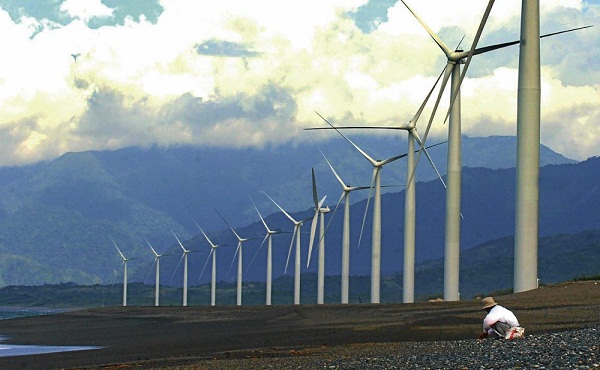In its National Renewable Energy Plan 2012 - 2030, the Philippines has set the goal of adopting an additional 1,548MW of renewable energy by 2030. A breakdown of this reveals that wind power will account for the greatest share of this at 38% (593MW), as shown in Fig. 1.
Moreover, the feed-in tariff (FIT) scheme the country adopted in 2012 targets wind power, biomass, solar power, and hydroelectric power along rivers. Of these, the price for wind power has been set at 8.53 pesos / kWh, which is the second most expensive purchase price after solar power at 8.69 pesos / kWh.

As a result of setting high targets and measures to promote the adoption of renewable energies under this FIT scheme, the commercial operation of wind power has been getting up to speed ever since 2014. As such, the Philippines now has the greatest cumulative installed capacity for wind power generation out of all of the ASEAN countries. The four sites on Luzon Island at Bangui Bay, Burgos, Caparispisan, and Pililla and the two sites on the Visayas island chain at San Lorenzo and Nabas shown in Table 1 and Fig. 2 that are currently operating amount to 426MW. In addition to these, 30 sites (1,079MW) on Luzon Island and 10 sites (89MW) on the Visayas island chain have been selected as candidate sites, and the adoption of wind power will be promoted moving forward in order to meet these targets. (July 2016)

Reference materials:
• CleanTechnica homepage
http://cleantechnica.com/2016/01/28/philippines-now-largest-wind-power-generator-asean-region/
• Asia LEDS Partnership homepage
http://www.asialeds.org/sites/default/files/resource/file/2012-2030-PEP.pdf
• Homepage of the Department of Energy, Philippines
http://www.doe.gov.ph/sites/default/files/pdf/renewable_energy/awarded_wind_2016-03-31_grid.pdf
• Promotion of Wind Power in the Philippines
https://www.asiabiomass.jp/english/topics/1401_04.html



















